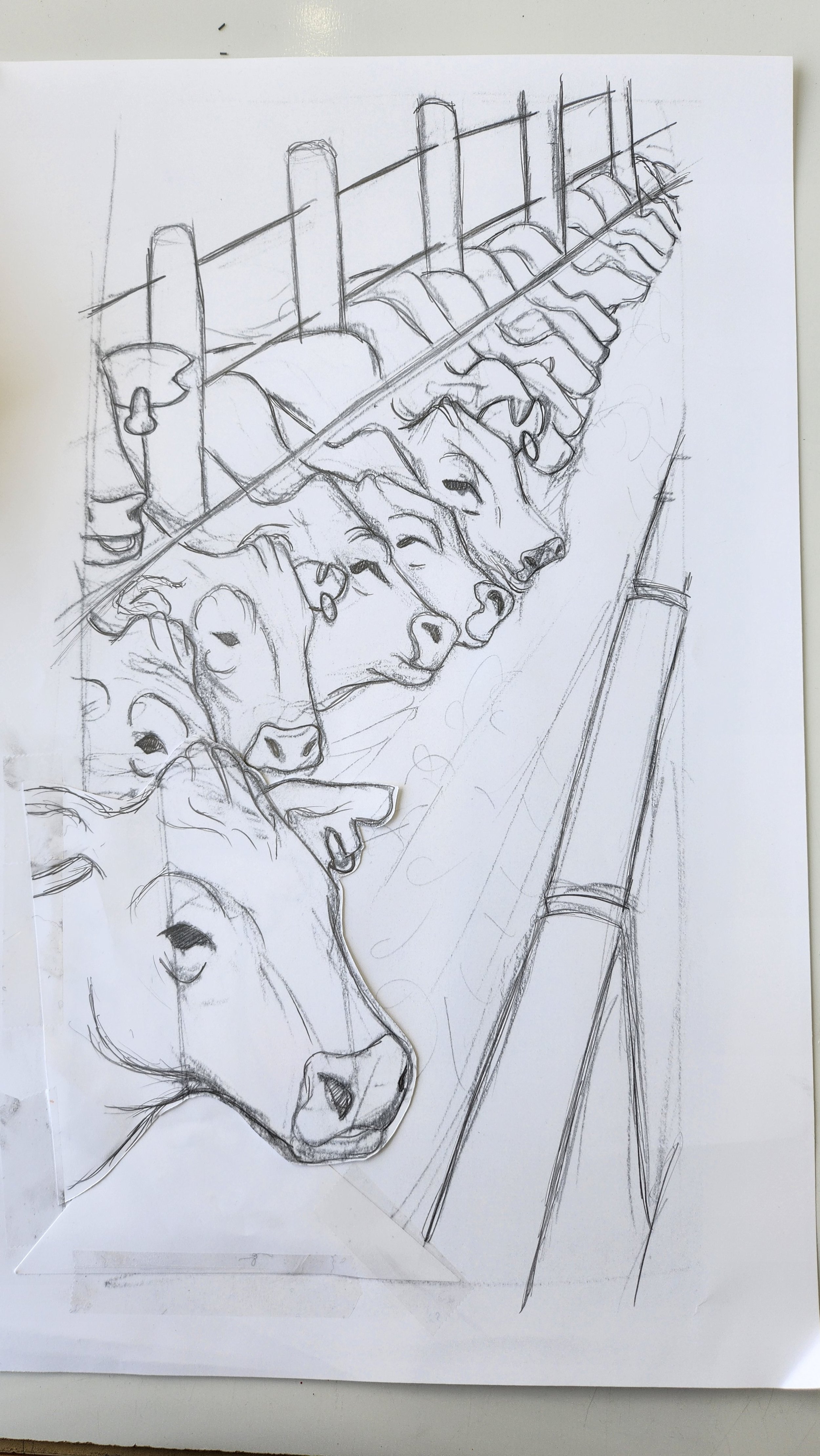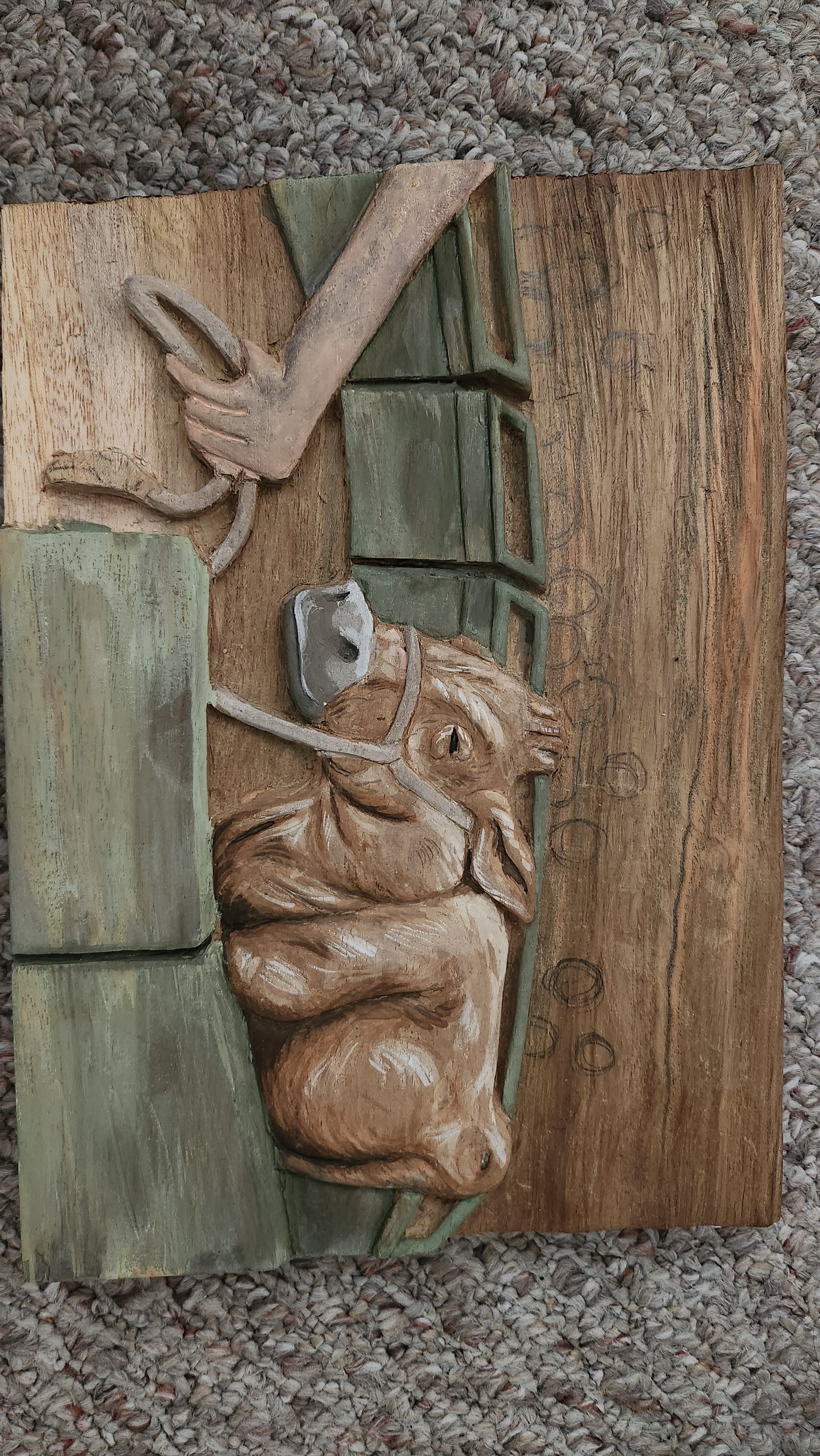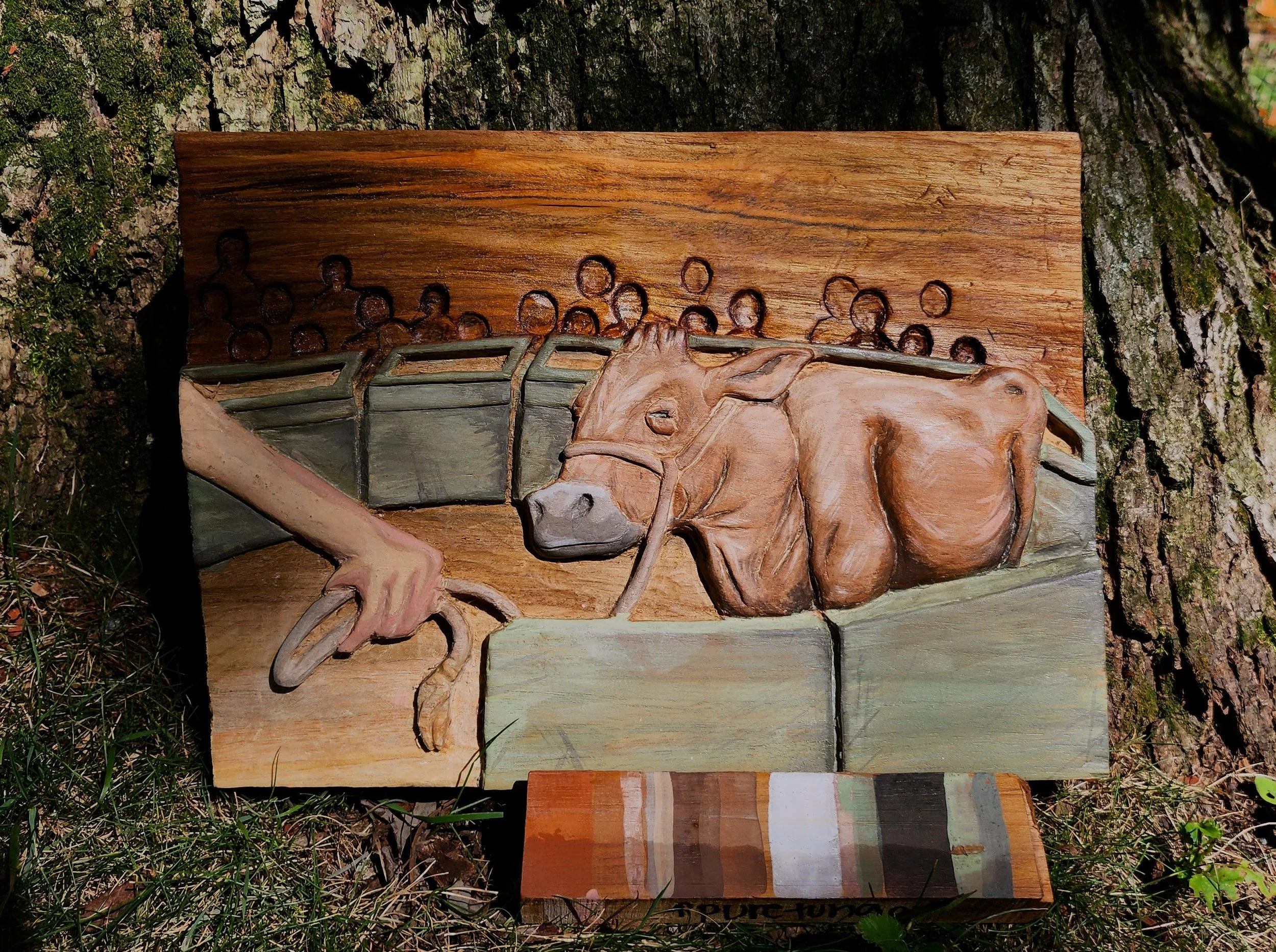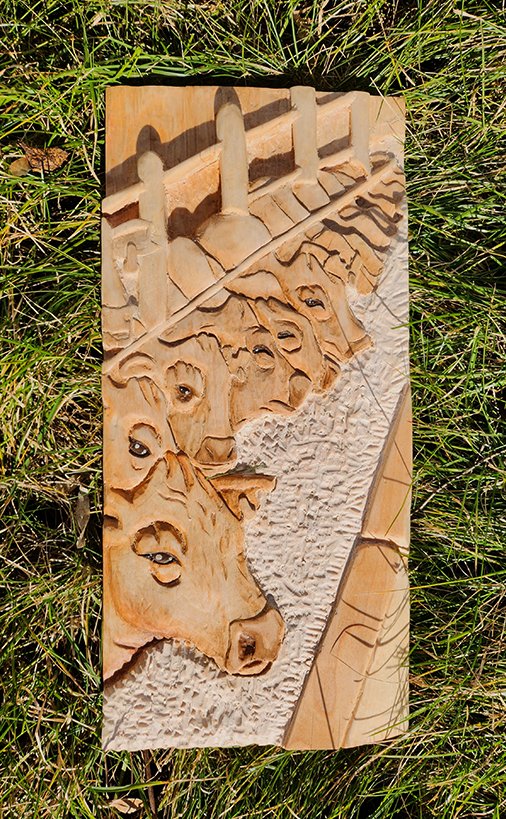
Pecuniary (adj.): from Latin pecuniarius “pertaining to money,” from pecunia “money, property, wealth,” from pecu “cattle, flock,” the word “pecunia” after being broken down can mean “wealth in cattle”. I titled my thesis “pecunia” because each touches on some aspect of how we take atvantage of cattle for our own personal wealth.
In charcoal I am drawn to building form on two-dimensional surfaces, having the ability to alter a page completely. The same can be said about the rhythmic movements while methodically removing wood. I began diving into wood identification and foraging after discovering a newfound passion for wood. The goal of my senior thesis is to strengthen the relationship between my illustration and my sculpture practices. The process and connection to the artwork are often more important than the imagery itself.
My current series draws inspiration from my research into the cattle farming industry, as well as general cow anatomy. Besides creating art, driving down the road to view the local cows has been the peace and reflection I need to feel inspired. My long-term goal has always been to own a cattle ranch while pursuing my art practices. This series brings light to topics like feedlots, animal auctioning, and the dairy industry while allowing me to explore the things I love the most.
The commercialization of beef double the number of cattle ranchers. The railroad allowed access to mid-western cities, allowing easier to transport to feedlots and stockyards. Shorter transportation times let farmers have more time to bulk extra muscle mass.
Higher demands in dairy production led to cattle acquiring larger udders. Meanwhile, domestication lead to a decreased size in the overall animal.
A byproduct of the dairy industry is an abundance of dairy calves. The practice of raising them for their meat became more popular and the veal industry began to boom.
Corn-concentrated diets make it possible to quicken the rate of weight gain with a economically viable, cheap alternative. However cattle evolved as grazers, their stomachs are not meant for mono-culture diets.
Process























